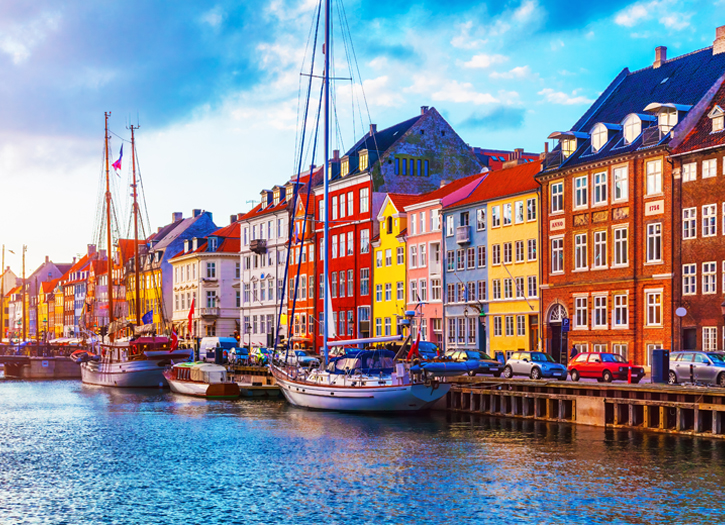The virus was first confirmed to have spread to Denmark on 27 February 2020. As of 14 August 2020, there have been 15,379 confirmed cases. Among these, 621 people have died, 13,216 have recovered, and 14 are in hospital, including 1 in intensive care. Denmark was among the first European countries to introduce lockdown measures, starting on 13 March. Following a period of consistent increase in hospitalisations, the number of people in hospital with COVID-19 has been falling since late March. In an attempt to reduce the economic impact of the pandemic, the government has introduced large economic packages with the support of all parties in Parliament. Nevertheless, it has been estimated that there will be a decrease in Gross Domestic Product of 3–10% in 2020.
On 4 March, there were four more cases confirmed in Denmark and the first confirmed case was reported from the Faroe Islands (an autonomous territory in the Kingdom of Denmark), bringing the total number of confirmed cases to fifteen. All the new cases were placed in home quarantine. The case in the Faroe Islands was a man with mild symptoms that had returned home from a conference in Paris, France. On 5 March, there were five new confirmed cases. One of the cases was former Danish national football player Thomas Kahlenberg, who had been infected at a birthday party in Amsterdam, the Netherlands. This forced the Danish clubs Brøndby and Lyngby, and the Dutch club Ajax to place some of their players and coaches, who had recently met with Kahlenberg, into quarantine.
On 6 April, Prime Minister Mette Frederiksen announced what she called the “first phase” of the reopening of Denmark: she announced that nurseries and kindergartens would be opened again on 15 April and that folkeskole would be reopened for pupils in years 1–6 (Danish: 0.-5. klasse); furthermore, the final exams for pupils in year 10 (Danish: 9. klasse), the last year of the folkeskole, were cancelled. Restaurants, cafés and hairdressers were to remain closed until 10 May, and larger gatherings will be prohibited until September.
According to the guidelines by the Danish Health Authority, all infected people that have no or mild symptoms and are not considered particularly vulnerable are placed in home quarantine with daily contact from health professionals. Anybody that has been in close contact with someone known to be infected with SARS-CoV-2 is also placed in home quarantine. Starting on 18 March at 10:00 AM, a number of further restrictions were activated: it became illegal to assemble more than ten people in public, all shopping centres and stores with close contact such as hairdressers and nightclubs must be closed.
On 13 March, all non-essential travel to the rest of the world was advised against because of the spread of the outbreak, restrictions introduced on foreign visitors (for example, restrictions of flights or forced quarantine), their healthcare system’s ability to handle a major outbreak or other reasons indirectly related to the coronavirus pandemic. On 13 March, the authorities recommended that all Danes that were abroad (excluding Danes that live abroad) return to Denmark as soon as possible. From 14 March to 13 April, all Danish borders were closed, with exceptions made solely for the transport of goods, people with an important reason for visiting, foreigners leaving Denmark, and Danes and people with a residence permit returning to Denmark.
On 3 March, the Danish government required all healthcare workers (in addition to nursing home workers) who had travelled to a high-risk region to self-quarantine themselves for 14 days after returning to Denmark; this was done to reduce the risk of vulnerable people getting infected. As of 9 March, the list of high-risk regions included mainland China, part of South Korea, Iran, Italy and the Austrian state of Tyrol. Starting on 9 March, passengers on flights that originated in a high-risk region were not given access to Danish airport buildings, but instead were picked up directly from the plane and transported by special buses that could drive them to their home or other locality of quarantine.From 11 March onwards, all flights from high-risk regions were cancelled.







Add Comment
You must be logged in to post a comment.